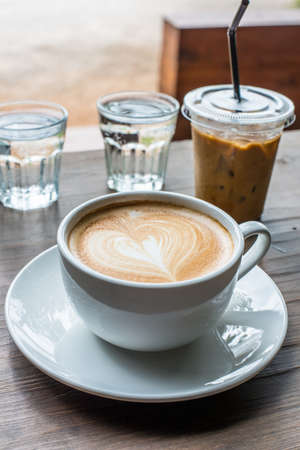The Rise of Coffee Culture in the UK
Take a stroll down any British high street, and you’ll soon be swept up in the aroma of freshly ground coffee beans wafting from both bustling chain cafés and hidden-away independents. The UK’s affair with coffee is no fleeting trend; it has become an indelible part of urban life, weaving its way into the fabric of daily routines and social interactions. Where once the humble cuppa reigned supreme, today’s city dwellers and suburbanites alike have embraced coffee as both ritual and refuge—a momentary pause in the rush, or a meeting point for lively conversation. This burgeoning coffee culture, with its artisan flat whites and quirky, hand-lettered menus, reflects more than just our evolving tastes. It hints at the complex role these spaces play: as informal offices for freelancers, living rooms for friends, or sanctuaries on a rainy London afternoon. Yet beneath this comforting veneer lies an uncomfortable truth: the rise of the takeaway culture has brought with it a deluge of single-use plastics—cups, lids, stirrers—that threaten to undermine the very urban landscape coffee now inhabits. As we sip our lattes and watch city life unfold through steamed-up windows, questions bubble up about sustainability and responsibility within this cherished ritual.
2. The Single-Use Plastic Problem
Walk through any British high street on a drizzly morning and you’ll see the tell-tale signs of our coffee habit: disposable cups peeking from bins, stray lids cartwheeling along the pavement, and plastic stirrers abandoned near park benches. These everyday items—so integral to our grab-and-go lifestyle—harbour a hidden cost that stretches far beyond convenience. When we talk about single-use plastics in the UK’s coffee scene, we’re not just speaking about what happens inside cafés; we’re unpacking an environmental dilemma that unfolds across riverbanks, city gutters, and those famously soggy British parks.
Disposable Coffeeware: Small Items, Big Impact
The scale of the issue is staggering. It’s estimated that Britons throw away 2.5 billion coffee cups each year. Most are lined with polyethylene, making them difficult to recycle in standard facilities. Add to this the billions of plastic lids and stirrers, and you have a recipe for long-term environmental persistence. These plastics often escape waste management systems—either blown by wind or washed into waterways—eventually finding their way into the countryside and urban green spaces alike.
Environmental Footprint: A Quick Comparison
| Item | Material | Average Decomposition Time | Main Environmental Concern |
|---|---|---|---|
| Coffee Cup | Paper + Polyethylene Lining | 20-30 Years | Difficult to recycle; landfill overflow |
| Lid | Polystyrene/Polypropylene | 450+ Years | Microplastic pollution; persistent litter |
| Stirrer | Plastic (often polystyrene) | Hundreds of Years | Easily lost; wildlife hazard |
The British Landscape: From Riverbanks to Rainy Parks
The consequences ripple outward: post-consumer waste clogs up rivers like the Thames, disrupts fragile wildlife habitats, and litters cherished local parks—transforming scenes of natural beauty into patchworks of discarded plastic. The issue isn’t confined to city centres either; even rural footpaths and coastal walks now bear traces of our daily caffeine fix. As a nation famed for its green spaces and community pride, this mounting tide of plastic waste challenges our collective sense of place and responsibility.

3. Innovative Solutions: From Reusable Cups to Compostable Materials
The UK’s coffee culture has always had a flair for the inventive, and nowhere is this more apparent than in its response to the single-use plastics dilemma. Across cities from London to Edinburgh, indie cafes and high-street chains alike are brewing up fresh ways to enjoy your flat white without leaving a plastic footprint. A distinctly British trend that’s taken root is the ‘keep-cup’ culture—reusable cups that have become a badge of eco-conscious honour among regulars. Some cafes, like Bristol’s pioneering establishments, even offer discounts or loyalty stamps to customers who bring their own cups, making sustainable sipping not just virtuous but also rewarding.
Compostable Alternatives: The Rise of Plant-Based Packaging
Beyond reusables, UK coffee shops are embracing compostable materials with gusto. Homegrown brands such as Vegware and Decent Packaging supply cafes with cups, lids, and stirrers made from plants—not plastic—that break down in industrial composting facilities. This shift isn’t merely cosmetic; it’s reshaping the very experience of takeaway coffee in Britain. In cities like Manchester, local roasters collaborate with community composting schemes, ensuring that your morning brew leaves nothing behind but pleasant memories.
Circular Economy Schemes: Closing the Loop
Perhaps most uniquely British are the circular economy initiatives cropping up across the country. London-based schemes like CupClub offer returnable cup systems: borrow a stylish reusable cup with your cappuccino, then drop it off at participating locations when you’re done—no need to carry it all day. Meanwhile, some forward-thinking cafes are experimenting with closed-loop recycling, turning used coffee grounds and compostable packaging into energy or fertiliser for urban gardens. These homegrown solutions speak to the UK’s knack for marrying environmental responsibility with everyday convenience.
The Changing Face of Coffee-on-the-Go
What emerges is a vibrant tapestry of innovation woven through Britain’s bustling coffee scene—a collective effort driven by baristas, entrepreneurs, and eco-minded customers alike. From keep-cup loyalty perks on chilly Yorkshire mornings to compostable takeaways along Brighton beach, UK initiatives are proving that reducing single-use plastics isn’t just about swapping materials—it’s about reinventing rituals and redefining what it means to grab a coffee on the go.
4. Barriers and Challenges in the Shift Away from Plastics
If you stroll through any British high street, from the indie nooks of Bristol to London’s bustling King’s Cross, it’s impossible not to notice the sheer convenience of single-use plastics. The shift away from these throwaway staples isn’t just a matter of swapping lids and cups—it’s an intricate knot of habits, economics, and infrastructure.
Consumer Habits: The Comfort of Convenience
Let’s face it—Brits love their coffee on the go. The morning dash for a flat white or an oat latte is often accompanied by the familiar feel of a disposable cup. Old habits die hard, and even as awareness grows, many customers still default to single-use out of routine or perceived hygiene concerns. The cultural ritual of ‘takeaway’ is deeply embedded, making behavioural change slow and sometimes reluctant.
The Cost Conundrum for Indie Coffee Shops
While big chains might weather the transition with relative ease, independent cafés—a cornerstone of UK coffee culture—face steeper hurdles. Sustainable alternatives often come at a higher price point, squeezing already tight margins. For a small neighbourhood café, every penny counts, and the added cost can be daunting when compared with mass-produced plastic options.
| Single-Use Plastic | Sustainable Alternative | |
|---|---|---|
| Average Cost per Cup (pence) | 10-12 | 15-20 |
| Supplier Availability | High | Variable |
| Customer Acceptance | High | Moderate |
The Patchy Reality of UK Recycling Infrastructure
You might think dropping your cup into the recycling bin is the end of its journey—but the UK’s recycling infrastructure is something of a postcode lottery. Not all councils accept compostable or biodegradable plastics, leading to confusion and contamination. Even where facilities exist, public understanding lags behind. A well-intentioned act can end up contributing to landfill if local systems aren’t equipped to process new materials.
A Snapshot: Regional Recycling Disparities
| Region/Council | Coffee Cup Recycling Facilities? | Main Challenge |
|---|---|---|
| Greater London | Partial Coverage | Lack of clear signage and education |
| Manchester City Council | No Dedicated Service | Cups often treated as general waste |
| Bristol City Council | Pilot Schemes in Place | Pilot still limited in scale and reach |
| Edinburgh City Council | No Facilities Yet | No current solution for compostables |
The Bottom Line: A Collective Effort Needed
Tackling single-use plastics in the UK coffee scene is about more than inventing new cups or clever marketing—it demands changes in habit, better support for independents, and robust investment in infrastructure. Only then can we hope to stir up real progress beneath our daily caffeine fix.
5. The Role of Policy, Community, and Creative Movements
If you take a stroll through any bustling British high street, the familiar sight of takeaway cups—once considered an inescapable part of city living—now hints at a quiet revolution brewing beneath the frothy surface of the UK’s coffee culture. At the heart of this transformation are not only eco-conscious baristas and ethically minded chains, but also a web of government regulations, grassroots campaigns, and creative local heroes, each playing their part in nudging single-use plastics towards obsolescence.
Government Regulation: Setting the Stage for Change
The UK government has not shied away from stirring the pot. From Westminster’s ambitious ban on plastic straws, stirrers, and cotton buds to Scotland’s pioneering Deposit Return Scheme (DRS), legislation has become a catalyst for change. England’s proposed Extended Producer Responsibility scheme holds companies accountable for the life cycle of their packaging—turning what was once corporate convenience into corporate responsibility. These policies have sent ripples through supply chains, forcing even global coffee giants to rethink their plastic footprints.
Grassroots Campaigns: Brewing Change from Below
But policy alone can’t shift habits brewed over decades. Enter a wave of grassroots activism—local campaigns like #RefillLondon or the BYO Cup movement have made reusable cups more than just a hipster accessory; they’re now a badge of environmental honour among commuters and students alike. Grassroots groups often work hand-in-hand with indie cafés to pilot cup exchange programmes and host zero-waste pop-ups, creating community-driven models that inspire loyalty and spark city-wide conversations.
Local Heroes: London’s Latte Revolution and Scotland’s Trailblazers
Every movement needs its champions. In London, independent cafés such as “Perky Blenders” and “Kaffeine” have ditched single-use plastics altogether, proving you don’t need to compromise style for sustainability. Up north in Scotland, towns like Dundee have embraced zero-waste living with gusto—cafés collaborate on reusable cup schemes while universities lead workshops on creative upcycling. These local heroes offer blueprints for others to follow, blending urban ingenuity with age-old British thrift.
Towards Lasting Change: A Shared Endeavour
The journey towards eliminating single-use plastics in the UK’s coffee scene is less about quick fixes and more about building momentum—a blend of top-down policy, bottom-up passion, and everyday creativity. Whether it’s a council-sponsored latte levy or a student-run mug library, every initiative underscores a singular truth: lasting change is best brewed together, one cup at a time.
6. Looking Forward: A Greener Coffee Cityscape
Imagine wandering down a cobbled lane in Bristol or weaving through the vibrant markets of Manchester—everywhere, the aroma of freshly ground beans mingles with the murmur of locals, yet something feels subtly revolutionary. The future of coffee in the UK is not just about taste; it’s about weaving ethical choices into the daily tapestry of city life. We stand on the cusp of a new urban ritual where bringing your own cup becomes as natural as saying “Cheers,” and baristas pour oat milk lattes into vessels that tell stories of reuse and care.
The Evolving Rituals of Urban Coffee
Picture a scene where café windows are free from the clutter of discarded plastics, and every takeaway cup is crafted with both ingenuity and conscience. The UK’s cities have always been shaped by their rituals—tea at four, a pint after work—and now, perhaps, the gentle clink of reusable cups will join this melody. These small acts, multiplied across thousands of mornings, afternoons, and rain-soaked evenings, promise to reshape not just habits but the very rhythm of urban life.
Innovation Meets Community Spirit
The next chapter for British coffee culture lies in creativity meeting community. Local roasteries might share cup libraries; neighbourhood cafés may offer incentives for regulars who champion sustainability. Startups, big chains, and indie spots alike are poised to trial compostable lids or integrate smart return schemes—each innovation nudging us toward greener streetscapes. And let’s not forget the role of policy: as government regulations tighten around single-use plastics, these efforts will only gather pace, knitting together business ambitions and grassroots enthusiasm.
A Shared Vision for Tomorrow’s Coffee Lovers
Ultimately, the most captivating vision is one where sustainability becomes second nature—a gentle undercurrent running through every coffee break. Imagine conversations sparked by a clever new reusable design or friendships formed over shared values at your favourite haunt. The UK’s coffee scene has always thrived on character and connection; now, it can lead in environmental consciousness too. As we look forward, it’s clear: every flat white served without waste is more than a drink—it’s a quiet act of hope for our cities’ future.


